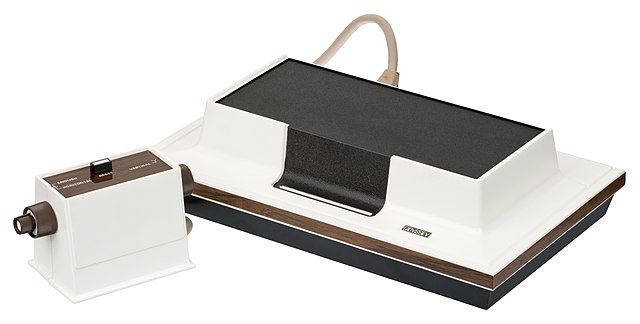William Alfred Higinbotham was an American physicist. A member of the team that developed the first nuclear bomb, he later became a leader in the nonproliferation movement. He also has a place in the history of video games for his 1958 creation of Tennis for Two, the first interactive analog computer game and one of the first electronic games to use a graphical display.
Higinbotham's Los Alamos identity photo
1958 exhibit of Tennis for Two
The history of video games began in the 1950s and 1960s as computer scientists began designing simple games and simulations on minicomputers and mainframes. Spacewar! was developed by Massachusetts Institute of Technology (MIT) student hobbyists in 1962 as one of the first such games on a video display. The first consumer video game hardware was released in the early 1970s. The first home video game console was the Magnavox Odyssey, and the first arcade video games were Computer Space and Pong. After its home console conversions, numerous companies sprang up to capture Pong's success in both the arcade and the home by cloning the game, causing a series of boom and bust cycles due to oversaturation and lack of innovation.
A collection of home and handheld video game consoles at the Computerspielemuseum Berlin
Spacewar! is credited as the first widely available and influential computer game.
The Magnavox Odyssey, the first home console
Pong clones like the APF TV Fun (pictured) over-saturated the market in the late 1970s.






